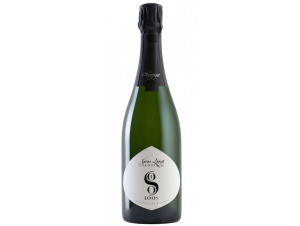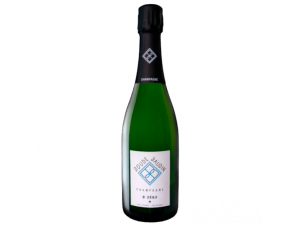You have no items in your shopping cart.
Champagne
The Champagne region encompasses 3,400 ha and four major subregions: Côte des Bar, Vallée de la Marne, Côtes des Blancs and Montagne de Reims. There are a multitude of different Champagnes to suit every festive occasion for the wine's many fans. Brut, dry, white, "grand cru", vintage or rosé – how do you like your champagnes? Read more on Champagne
-
Top Selling-26%
-
Top Selling-15%
-
Top Selling-26%
- -21%
- -26%
- -25%
- -20%
- -26%
- -30%
Region Champagne
A Bubbly Viticultural Region
The Champagne region is one of the pillars of France's wine history. So important that it has given its name to the style of wine produced. It is customary to drink Champagne for special occasions. This gives Champagne the image of an exceptional wine. And it is the case. However, it is not necessary to wait for a particular occasion to taste its fine bubbles.
The vineyards of Champagne extend over the entire Champagne region which is now part of the Grand-Est. It crosses five departments, namely: the Marne (70%), Haute-Marne and Aube (20%), Aisne and Seine et Marne (10%). >We know the Champagne wine that is produced in this wine region. However, it is not the only wine to discover. The region also offers red, white and rosé wines, a little more confidential. As for Champagne, it is also available in rosé.
Characteristics of the Champagne vineyard
The champenois vineyard is spread out over the five departments we mentioned earlier in this article. Between the east of the Paris region, at the end of the Seine et Marne river and the terroirs of the Grand Est, the vineyards of Champagne extend over more than 33,000 hectares and 250 kilometers. The wine-growing region is delimited by the law of July 22, 1927. There are several wine-growing areas: the Montagne de Reims at 300 meters altitude, the Marne Valley, the Côte des blancs, de Sézanne, des Bars and Vitry le François. You will discover different landscapes: thick forests, mountains, fields and nature as far as the eye can see.
It is the northernmost vineyard of the country. It has a continental climate. Winters are very cold and frosts are frequent; summers and autumns are temperate and sunny. The average temperature is 10 degrees, which is still quite cold. The average amount of sunshine is about 1600 hours per year. These complicated conditions lead winegrowers to plant their vines halfway up the hillside to protect them from the cold. But it is these same climatic characteristics which make the quality of Champagne and which give acidity to the wines.
The vine grows on varied soils. One discovers clayey-sandy, limestone and chalk soils. It is the association of the advantages of the soils and the climate that gives the champagnes their character and marks the differences between the great houses.
The grape varieties of Champagne
The champagne is elaborated thanks to the assembly of different grape varieties. The most used are Chardonnay for 29% of the planted surface, Pinot noir for 39% and Pinot Meunier for 32%. More confidentially, we also find some traditional grape varieties on very small surfaces: arbane, petit meslier, pinot de juillet, pinot gris vrai and pinot blanc vrai.
The small yellow berries of the Chardonnay bring to the wines finesse, lightness and freshness. One will also distinguish aromas of hazelnut, aniseed and citrus fruits. It is a resistant grape variety which develops well on chalky and chalky soils. When used alone, without blending, it creates the champagne Blanc de Blancs..
The bluish berries of Pinot Noir give the power and body. It is mainly located on the Montagne de Reims and on the Côte des Bars.
The juicy berries from Le Meunier give to the champagne a certain roundness and bring to it red fruit aromas. It is a vigorous grape variety that likes clay soils.
The great houses of Champagne
La Maison Ruinart
The Maison Ruinart is the oldest Maison de Champagne. It was founded in 1729 by Nicolas Ruinart, the nephew of the monk Dom Ruinart, in Epernay. Today, it belongs to the LVMH group. At the time, Dom Ruinart was a linen merchant. But he quickly understood the importance that champagne could have. So he passed on his knowledge of trading and wine to his nephew. It was not until a royal decree in 1728 that he obtained the right to to market wine in bottles and no longer only in barrel. As champagne could only be transported in bottles, it was a liberation for the Ruinart family, who were now able to export their champagne.The champagne of the Ruinart House is produced on 1600 hectares of vines. Its viticultural signature remains the Chardonnay grape variety, from the Côte des Blancs and the Montagne de Reims. The Ruinart House offers brut, Blanc de Blancs and Rosés. These are champagnes that are distinguished by their elegance and freshness. For example, the R de Ruinart Brut is an ideal champagne for aperitifs. Its golden and limpid color is particularly brilliant. Its fine bubbles are very lively. On the nose, this cuvée is fresh and fruity, with accents of pear and dried fruits. On the palate, it is balanced and round with aromas of ripe fruit.
La Maison Deutz
The Maison Deutz was founded by William Deutz and Pierre-Hubert Gelderman in 1838 in Ay. The vineyard of this Champagne House extends over 45 hectares. This Franco-German association has combined rigor and excellence to create exceptional champagnes. It owns the majority of the "grands crus" and "premiers crus" of the region. You can taste their champagnes with very fine and delicate bubbles, mainly blended with Pinot noir. The House offers Bruts, Rosés and Blanc de Blancs. Deutz champagnes are recognized for their complexity and power.The Brut Classic is distinguished by its freshness and its very aromatic character. Its deep golden color highlights bubbles of great finesse. On the nose, one can distinguish floral notes followed by aromas of toast and ripe fruit.
The Brut Rosé is very greedy and stands out by its finesse. It has a luminous dress of a marked pink. Its bubbles are very active and dense. On the nose, it is a very expressive champagne. One can distinguish aromas of red fruits and an accent of brioche. On the palate, it is full and voluptuous and always very fruity.
The Bollinger House
The Bollinger House extends over 178 hectares around Ay and produces high quality champagnes. Known for its rigorous standards, this House was founded in 1829 following the association of the Count of Villermont, an aristocrat who was already producing a sparkling wine, and Joseph Bollinger and Paul Renaudin, both wine experts. The Count did not want to market the champagne under his name, so the wine was named Bollinger-Renaudin. The name Renaudin disappeared from the labels from 1960.It is one of the more famous Houses in France. A nod to this brand can be found in James Bond films, where the secret agent always takes the time to drink a glass of this champagne. You will be able to taste powerful, refined and complex champagnes. The House of Bollinger produces brut, extra brut, moderate and rosé Champagnes. You can also taste an exceptional red wine.
The Bollinger Rosé is an aromatic champagne they accents of ripe red fruits. Its robe is an intense salmon color and its foam is generous. In the mouth, we confirm its vinosity and finesse.
The Bollinger Brut of 2008 is a very appreciated vintage. Its robe is a deep golden color and its bubbles are fine and numerous. On the nose, one can distinguish a large aromatic palette with touches of yellow fruits, spices and white flowers. On the palate, it is an intense and creamy wine.
La Maison Veuve Clicquot
The House Clicquot was born in 1772. It was created by François Clicquot. At his death, his wife, Barbe-Nicole Clicquot, took over the business with a masterful hand. She is then nicknamed "the Widow Clicquot". It was she who created the famous yellow label on Clicquot bottles, which is recognizable among all the Clicquot bottles. It was after her death that the House was renamed by her nickname. Veuve Clicquot is located in Reims and covers more than 1,600 hectares. Its champagnes are mainly blended with Pinot Noir. It offers Bruts, Blancs de Blancs and rosés.For example, the Brut Carte Jaune has a beautiful golden robe and a light and creamy foam. On the nose, it is a powerful wine with fruit and vanilla aromas. On the palate, it is structured and vinous. We find the fruit aromas that give it its aromatic character.
The Rosé is a champagne of character with a powdery pink color. On the nose, it is generous and fine and one can distinguish aromas of raspberry and strawberry, then dried fruits and cookies. On the palate, one is pleasantly surprised by its great freshness. It is a fruity and balanced champagne.
La Maison Dom Pérignon
The House Dom Pérignon is famous by its name, that of the creator of the wine of Champagne. It is located in Epernay and covers 1600 hectares of vineyards. It belongs to the Moët et Chandon group, which in turn belongs to the LVMH group. The first Dom Pérignon cuvée dates from 1921 and was marketed from 1935. Dom Pérignon offers a range of brut, extra-brut and rosé wines recognizable by their finesse and balance.As an example, the Vintage Extra-Brut of 2008 is a slender and fruity champagne. Its golden robe is dark. On the nose, one can distinguish touches of white flowers, citrus and fruit, with an accent of mint. In the mouth, it is a tonic and fruity champagne. One discovers notes of spices.
The Vintage Rosé of 2006 pays tribute to the pinot noir. Its salmon robe with pink reflections is brilliant and its bubbles are lively. On the nose, one can distinguish a mix of spices, cocoa, fig and candied orange. In the mouth, it is an ample and intense champagne.
Good to know
Winemakers
Listed 703 winemakers
Production
90% sparkling wines, 5% red wines and 5% rosés
Area
-
Soil and subsoil
Limestone (constant natural irrigation)
Grape variety
Reds and rosés : Pinot noir
Whites : Chardonnay, Pinot Blanc, Pinot Gris, Arbanne and Petit Meslier
Champagne appellations








































 TWIL - Achat de Vin
TWIL - Achat de Vin


